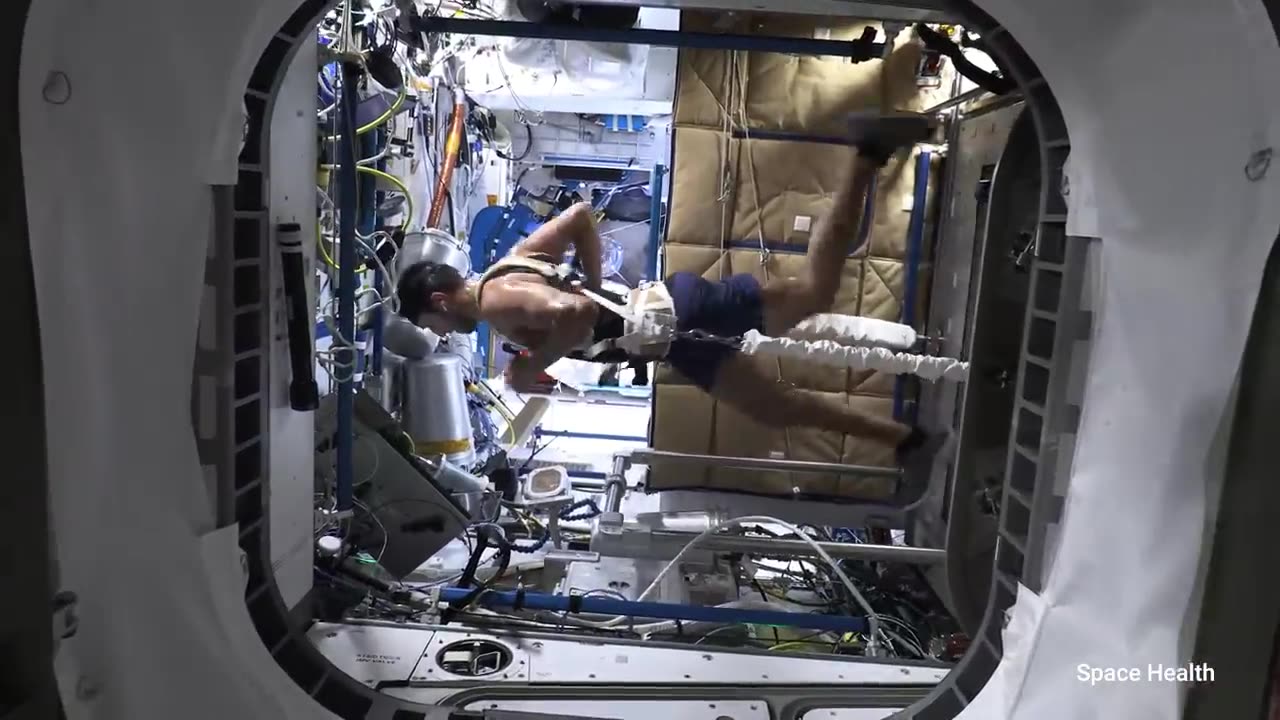Premium Only Content

The Science of NASA's SpaceX Crew-6 Mission
After launching to the International Space Station on March 2, 2023, NASA's SpaceX Crew-6 mission is wrapping up its time in orbit, with a return to Earth in early September 2023.
NASA astronauts Stephen Bowen and Woody Hoburg, UAE (United Arab Emirates) astronaut Sultan Alneyadi, and Roscosmos cosmonaut Andrey Fedyaev spent their months on the orbiting lab conducting scientific investigations and technology demonstrations, including running a student robotic challenge, studying plant genetic adaptations to space, and monitoring human health in microgravity to prepare for exploration beyond low Earth orbit and to benefit life on Earth.
NASA's SpaceX Crew-6 mission launched on March 2, 2023, and arrived at the International Space Station (ISS) on March 4, 2023. The four astronauts on board, NASA astronauts Stephen Bowen and Woody Hoburg, UAE astronaut Sultan Alneyadi, and Roscosmos cosmonaut Andrey Fedyaev, conducted a variety of scientific investigations and technology demonstrations during their six-month stay on the ISS.
One of the main goals of the Crew-6 mission was to study the effects of microgravity on the human body. The astronauts participated in a number of experiments to learn more about how microgravity affects muscle mass, bone density, and cardiovascular health. They also studied the effects of microgravity on the immune system and cognitive function.
In addition to their biomedical research, the Crew-6 astronauts also conducted a number of experiments in physics, chemistry, and materials science. They grew crystals of proteins and other molecules in microgravity, and they studied the behavior of fluids and gases in this unique environment. The astronauts also tested new technologies for use in space exploration, such as robots and 3D printers.
The Crew-6 mission was a success, and the astronauts' research will help us to better understand the effects of microgravity on the human body and to develop new technologies for space exploration.
Monoclonal Antibodies PCG-2: This experiment investigated the process of crystallizing monoclonal antibodies in microgravity. Monoclonal antibodies are lab-made proteins that function like human antibodies. Improving crystallization could reduce the cost of producing drugs and enable formulations that do not need cold storage and can be administered more easily.
Zero Robotics: This student competition challenged students to write software to control the Astrobee free-flying robots. The Astrobee robots are used to perform tasks such as inspecting the ISS and delivering cargo.
ISS SPHERES: This experiment tested a new type of spacecraft control system that uses a swarm of small satellites. The SPHERES satellites are used to simulate the behavior of large spacecraft in microgravity.
Metal 3D Printing in Microgravity: This experiment tested a new 3D printer that can be used to print metal parts in microgravity. 3D printing is a promising technology for manufacturing parts in space.
The Crew-6 mission was a valuable contribution to our understanding of the universe and our place in it. The astronauts' research will help us to better understand the effects of microgravity on the human body and to develop new technologies for space exploration.
#nasa
#spacex
#crew6
#iss
#science
#research
#microgravity
#humanbody
#technology
#spaceexploration
#monoclonalantibodies
#Astrobee
#spheres
#3dprinters
-
 3:10:51
3:10:51
Laura Loomer
8 hours agoEP129: NY Democrats Elect Jihadi Communist
46.6K27 -
 3:01:30
3:01:30
Barry Cunningham
9 hours agoPRESIDENT TRUMP HAS SPARKED A NEW ATTITUDE! DO YOU FEEL IT?
91.8K63 -
 8:05:28
8:05:28
RalliedLIVE
13 hours ago $4.37 earnedSpecialist Addicted Man Plays Warzone
72.3K2 -
 1:05:42
1:05:42
I_Came_With_Fire_Podcast
11 hours agoFaith & America's Founders
53K5 -
 9:21:33
9:21:33
Dr Disrespect
17 hours ago🔴LIVE - DR DISRESPECT - THE BEST IS BACK!
215K25 -
 1:32:53
1:32:53
Badlands Media
1 day agoAltered State S3 Ep. 34: Sub Wars, Sun Cycles, and the Shifting Matrix
94.5K7 -
 43:41
43:41
CarlCrusher
8 hours agoSHOCKING Discovery on the Path of the Skinwalker | Thunder Strike Ranch | Episode 2
44.1K5 -
 30:58
30:58
Solar Groove Muzic
1 day ago $1.26 earnedSUMMER AFRO HOUSE BEATS of 2025
31.6K3 -
 8:38
8:38
WhaddoYouMeme
13 hours ago $2.84 earnedChristians in Iran Are Being Hunted—Here’s Why
34.5K35 -
 3:49:16
3:49:16
VapinGamers
10 hours ago $1.99 earnedCOD Black Ops 6 with Abnerdagreat, Gunnin and Runnin! - !rumbot
25.7K1